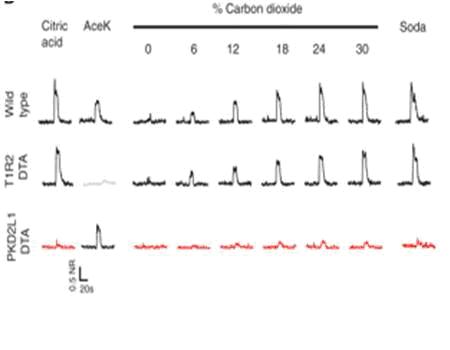How is the special taste of carbonated drinks created?

Opening a can of Coke and sipping the bubbly drink will make your taste buds dance. For a long time, scientists faced two main suspects: the bubbles and carbon dioxide. They managed to dismiss the bubbles as being responsible for the unique taste after letting people drink fizzy drinks in pressure chambers that prevented the bubbles from forming. The taste remained, even when there were no bubbles. That left the second suspect - and now there is also evidence against him.
First a little about how the tongue and the sense of taste work. There are thousands of taste buds on our tongue, you can see them even without a microscope. There are four types of tongue nipples. Inside the nipple are the taste buds. The different glands can sense different tastes. In the same nipple there are sensory glands of different flavors. Inside the tuber are the taste receptors that transmit the sensation to the brain through nerve cells.
Back to carbon dioxide - according to New research published in Science magazine, the cells in the taste buds that respond to the stimulation of a sour taste, are also responsible for tasting the bubbles of carbon dioxide. The fact that we are able to taste the carbon dioxide in soda confused scientists in the past, since they thought that the human tongue could only sense five tastes - bitter, sweet, salty, sour and umami (a characteristic taste of monosodium glutamate). Research shows that sour taste buds contain an enzyme called carbonic anhydrase 4, which reacts with carbon dioxide. This enzyme is interesting because it is found on the outside of cells. The enzyme breaks down carbon dioxide, in the presence of water, into bicarbonate and hydrogen ions (protons). The protons are actually an acid that the taste buds can sense. Thus the enzyme produces a sensation of acidity just outside the cells of the sour taste sensation.
The first hint that the enzyme is related to the release of carbon dioxide found in the drink came precisely from mountain climbers. The drug used to treat altitude sickness has an interesting side effect, it blocks the activity of the carbonic anhydrase enzyme. Those mountain climbers reported that under the influence of the drug, champagne or other fizzy drinks tasted like water used to wash dishes.
In light of the accumulated suspicions, it was necessary to find decisive evidence against the carbon dioxide. The scientists did this by studying mice. They created, with the help of genetic engineering, mice that lacked one of the tastes. Thus there were mice that could not taste sweet, mice that could not taste salty and so on. They gave mice sips of soda or carbon dioxide gas and recorded how the tongue signaled the sensation to the brain. Both the soda and the gas produced similar sensations. But when they tested mice that lacked the sour taste, the brain did not receive any signal.
In the picture: the comparison of the signals obtained from different mice for different substances. In the top row, a normal mouse, in the second row a mouse without the ability to taste sweet, in the third row (in red) a mouse without the ability to taste sour. It can be seen that the mice that do not feel sour did not react to citric acid, to rising concentrations of carbon dioxide and to soda.
The discovery that we can taste carbon dioxide is not only of interest to soft drink manufacturers, but also to evolutionary biologists. After all, soft drinks like Coca Cola didn't exist before the 19th century, so why would we have the ability to sense carbon dioxide? It is possible that the ability to detect carbon dioxide evolved to detect sources that produce carbon dioxide such as fermenting fruit, where fermentation is a clue to decay. According to this approach, it is amusing to think that it is precisely a warning sign from the past that allows us today to enjoy beverages that have been fermented today, such as beer or champagne. Another possibility is that the ability to detect carbon dioxide is a random error. It is possible that the enzyme in the sour taste buds is to maintain the acidity level (pH) in the taste buds, and the aroma of the soda is a byproduct.

4 תגובות
Do you have to abuse mice for that?
Definitely well written
And I'm sarcastic, "fascinating and attractive".
Great post! It is written in a fascinating and engaging way and the topic is very interesting. Keep it up!